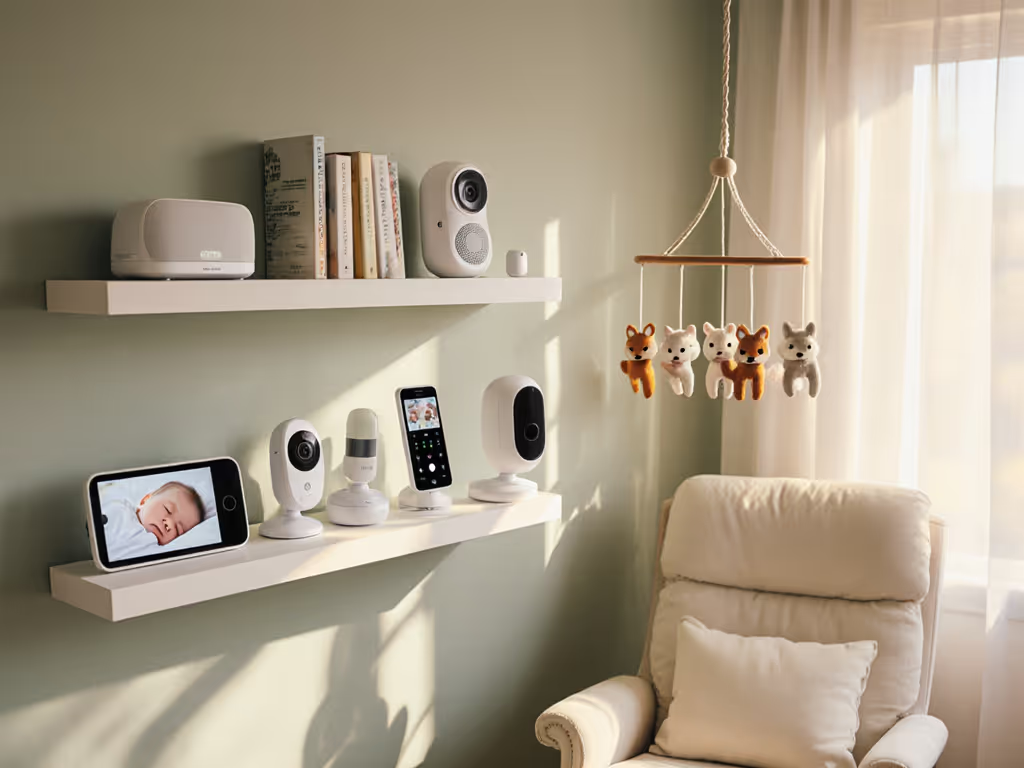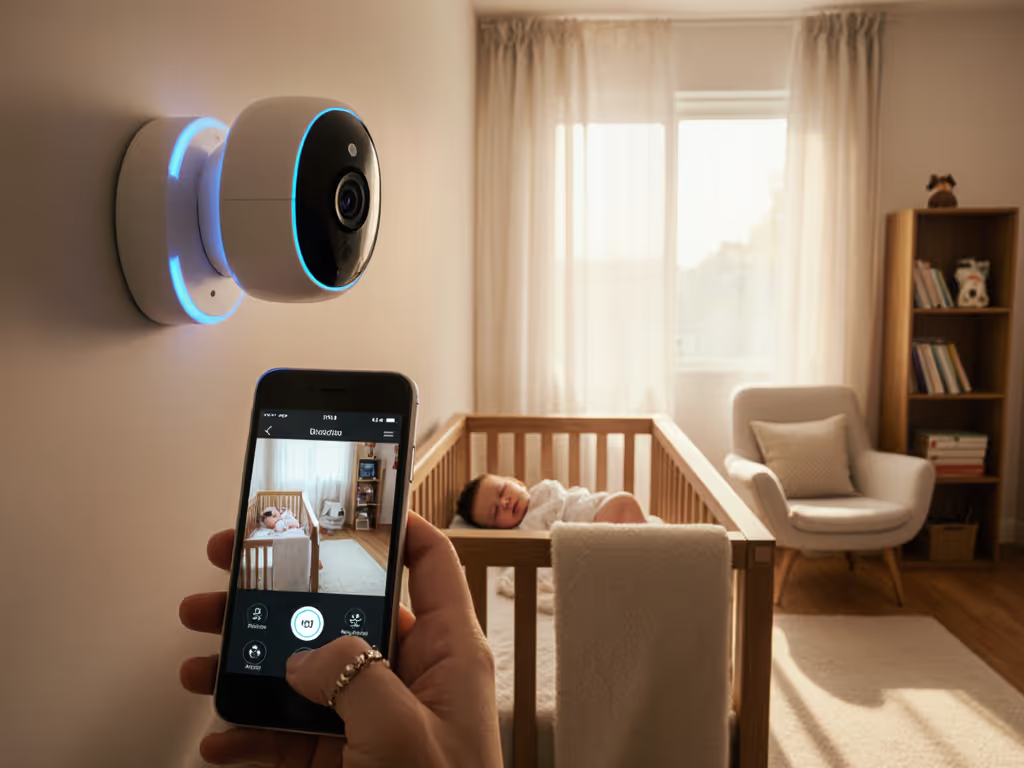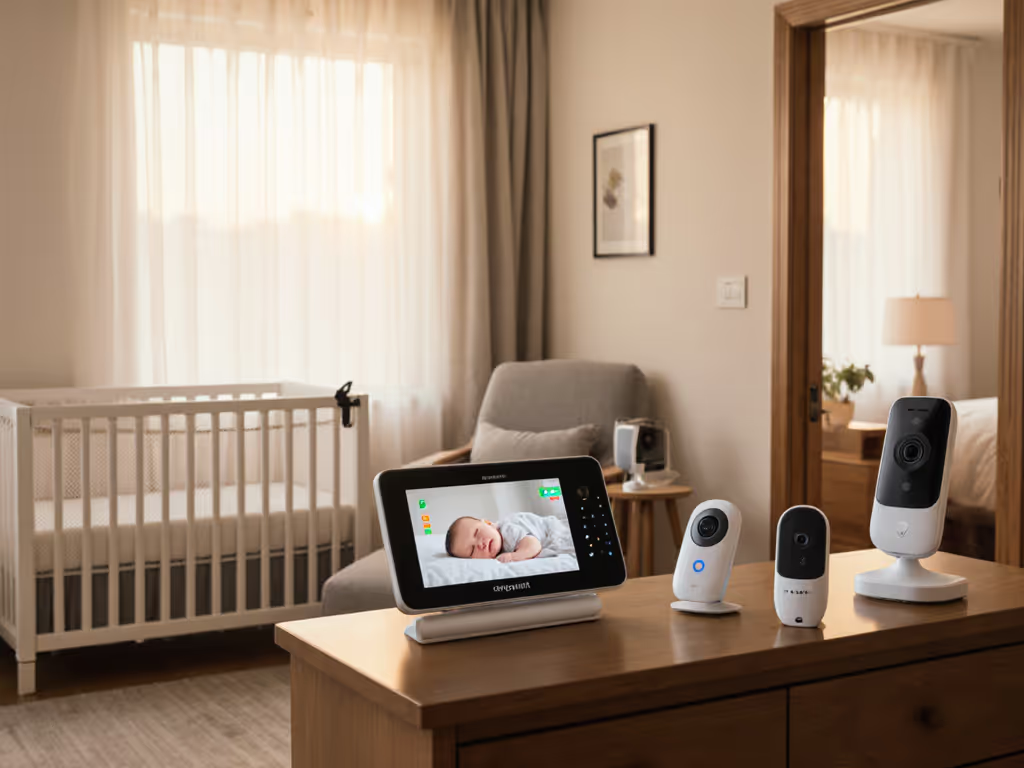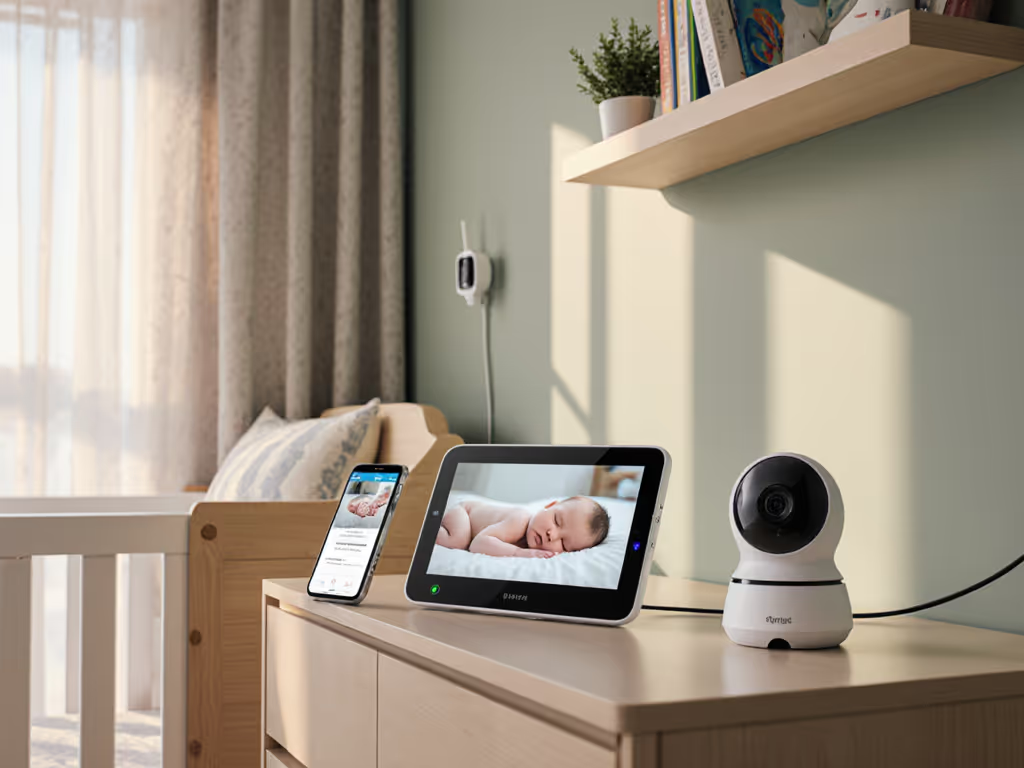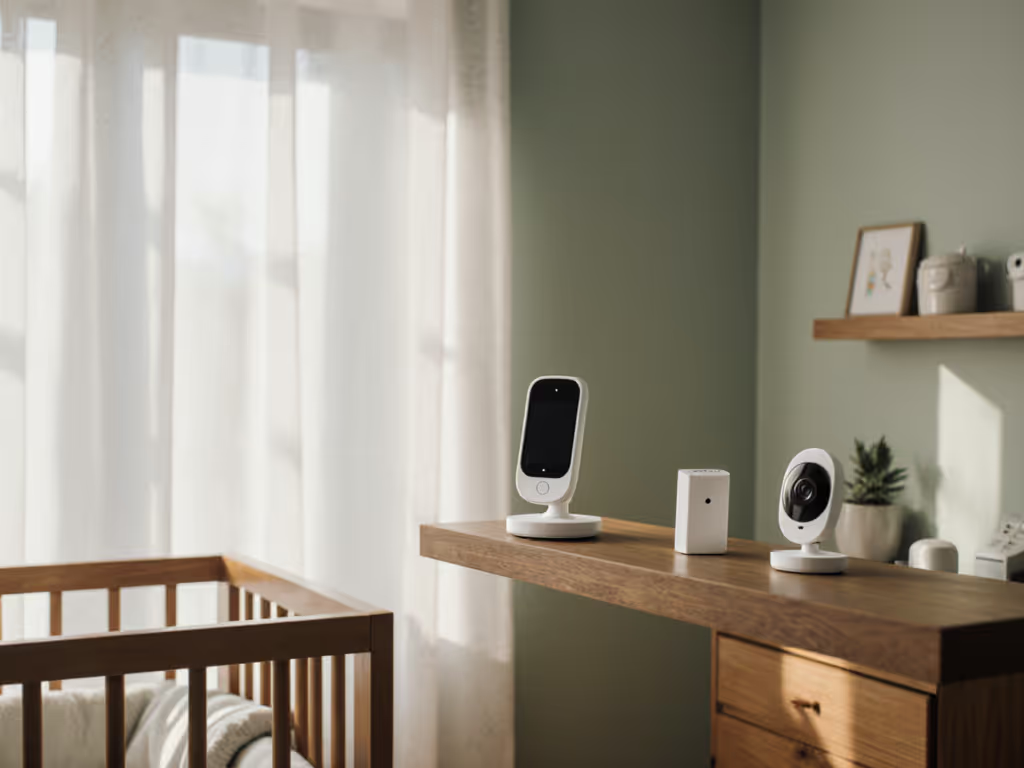
Why Use Breathing Monitors: Complete Guide for Parents
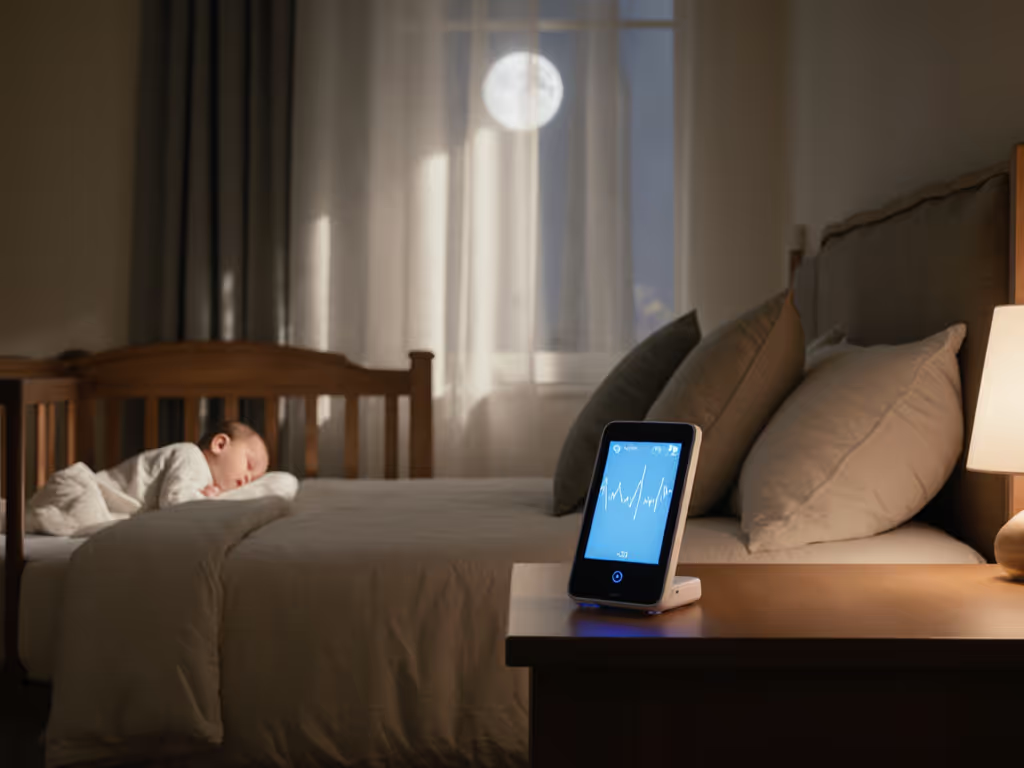
Sudden infant health emergencies can happen with little warning, which is why over 60 percent of new parents worry daily about their baby's breathing at night. Advanced breathing monitors now offer a way to keep a close watch without constant bedside checks. Understanding how these tools work and when they make sense for your family can relieve stress and support a safer sleep environment for your child.
Key Takeaways
| Point | Details |
|---|---|
| Importance of Breathing Monitors | Breathing monitors track infants' vital respiratory functions, providing real-time alerts to parents about potential health risks. |
| Types of Monitors | Options include wearable sensors, contactless radar-based devices, and smart home technologies, each with unique advantages and use cases. |
| Privacy Considerations | Parents must assess data protection measures and privacy policies when using breathing monitors to safeguard sensitive information. |
| Supplementary Role | Breathing monitors should complement traditional infant care methods and not replace professional medical advice or interventions. |
Defining Breathing Monitors for Babies
A breathing monitor is a specialized device designed to track a baby's vital respiratory functions and provide real-time alerts to parents about potential health risks. These sophisticated electronic systems continuously observe an infant's heart rate, breathing patterns, and movement, creating a safety net that gives parents peace of mind during critical developmental stages.
At its core, a breathing monitor functions as an advanced early warning system. These devices use sensitive sensors to detect subtle changes in an infant's breathing rhythm and heart rate. Home apnea monitors specifically watch for instances where a baby's respiration might slow down or momentarily stop, which could signal potential health complications. When the monitor detects abnormal patterns outside the expected range, it immediately triggers an alarm to notify caregivers, allowing for rapid intervention.
The primary components of breathing monitors typically include:
- Specialized sensors placed near or on the baby
- Advanced algorithms that analyze respiratory data
- Wireless connectivity for remote monitoring
- Alarm systems with adjustable sensitivity
- Battery backup and power management features
While these devices provide an additional layer of safety, they are particularly valuable for specific scenarios. Premature infants, babies with previous medical complications, or those with documented breathing irregularities might benefit most from continuous monitoring. Parents should always consult pediatric professionals to understand whether a breathing monitor is recommended for their specific situation.
Types of Breathing Monitors Explained
Breathing monitors have evolved dramatically, offering parents multiple sophisticated technologies to track their infant's respiratory health. Wearable monitors represent the most traditional approach, using sensor-equipped devices directly attached to the baby's body or clothing to track heart rate, movement, and breathing patterns in real-time. These devices typically include small clips, smart clothing, or patches that provide continuous monitoring and immediate alerts.
Contactless monitoring technologies are revolutionizing infant safety tracking. Cutting-edge systems like frequency-modulated continuous-wave (FMCW) radar-based devices can wirelessly monitor breathing rates without physical contact. Emerging smart home technologies, including smart speakers like Amazon Echo or Google Home, now leverage advanced algorithms to detect breathing abnormalities through sophisticated sound and movement analysis, representing a breakthrough in non-invasive infant monitoring.
The primary categories of breathing monitors include:
Here's a comparison of the main types of breathing monitors for infants:
| Monitor Type | Monitoring Method | Key Advantages | Typical Use Cases |
|---|---|---|---|
| Wearable Sensor Devices | Body attachment<br>Real-time data | High precision<br>Immediate alerts | Premature infants<br>Medical history risk |
| Contactless Radar-Based | Wireless<br>No contact | Non-invasive<br>Hospital/home setup | Infants with skin sensitivity<br>Multi-child households |
| Smart Home Technology | Sound/motion analysis<br>Ambient sensors | Minimal hardware<br>Smart ecosystem integration | Tech-savvy homes<br>General ongoing monitoring |
-
Wearable Sensor Devices
- Direct body attachment
- Immediate physical proximity monitoring
- High precision tracking
-
Contactless Radar-Based Monitors
- Wireless monitoring
- No physical contact required
- Hospital and home deployment options
-
Smart Home Technology Monitors
- Ambient sound and movement tracking
- Integrated with existing smart home ecosystems
- Minimal additional hardware investment
Choosing the right breathing monitor depends on individual family needs, infant health conditions, and comfort with different monitoring technologies. Parents should consider factors like accuracy, ease of use, battery life, and compatibility with their home environment when selecting a monitoring solution.
Consulting pediatric healthcare professionals can provide personalized guidance on the most appropriate monitoring approach for specific infant health requirements.

How Breathing Monitors Track and Alert
Breathing monitors employ sophisticated sensor technologies to create a comprehensive safety tracking system for infants. The core mechanism involves continuous monitoring of respiratory and cardiac activities, using advanced algorithms to detect even the most subtle changes in an infant's physiological patterns. Stick-on patches, chest belts, or sophisticated wireless sensors collect real-time data about the baby's breathing rate, movement, and heart function, creating a dynamic health surveillance network.
The tracking process involves multiple layers of sophisticated detection. Wearable sensors typically use precision electronic components that measure chest wall movement, detecting the minute expansions and contractions associated with normal breathing. When these movements fall outside predetermined safe ranges, the monitor immediately generates an alert. Some advanced systems incorporate multiple sensor types - including movement sensors, sound analysis, and thermal imaging - to create a comprehensive monitoring approach that reduces false alarm rates and increases detection accuracy.
Monitoring technologies can be categorized by their alert mechanisms:
-
Direct Contact Monitors
- Stick-on patches or chest belts
- Immediate physical proximity tracking
- High precision respiratory measurements
-
Contactless Monitoring Systems
- Sound wave and reflection analysis
- No physical attachment required
- White noise-based detection techniques
-
Smart Technology Integration
- Algorithmic breathing pattern recognition
- Leveraging existing home technology
- Machine learning-enhanced detection
The ultimate goal of these monitoring systems is providing parents with real-time insights and rapid alert capabilities. By combining cutting-edge sensor technologies with intelligent data processing, breathing monitors transform infant safety monitoring from a reactive to a proactive approach. Parents gain an additional layer of protection, with technology working silently in the background to provide continuous, unobtrusive health surveillance.
Privacy and Data Security Considerations
Privacy concerns have become increasingly critical with the rise of advanced breathing monitoring technologies. Smart devices that track infant health generate massive amounts of sensitive personal data, raising significant questions about information protection and potential misuse. Parents must carefully evaluate the data collection, storage, and transmission practices of any breathing monitor before integrating it into their home environment.
The core privacy challenges center around the comprehensive nature of health monitoring technologies. Contactless monitoring systems and smart home devices continuously collect intimate details about an infant's physiological patterns, creating extensive digital footprints that could potentially be vulnerable to unauthorized access or data breaches. These technologies often require cloud storage and internet connectivity, which introduces additional layers of potential security risks that parents must thoroughly understand and mitigate.
Key privacy protection strategies for parents include:
-
Data Encryption
- Verify end-to-end encryption protocols
- Ensure secure data transmission
- Limit potential unauthorized access
-
Minimal Data Collection
- Choose monitors with limited data retention
- Understand exactly what information is stored
- Request clear data deletion policies
-
Device Security Features
- Check for regular software updates
- Use strong, unique passwords
- Enable two-factor authentication
Ultimately, parents must balance the significant safety benefits of breathing monitors against potential privacy risks. Selecting devices from reputable manufacturers with transparent data handling practices, robust security mechanisms, and clear privacy policies becomes crucial. Regularly reviewing and updating device settings, understanding data collection terms, and maintaining awareness of potential vulnerabilities will help families leverage these technologies while protecting their infant's sensitive information.
Risks, Limitations, and Alternatives
Breathing monitors, while innovative, are not infallible technological solutions. Parents must understand that these devices are supplementary safety tools, not guaranteed medical interventions. Reliability concerns emerge from potential technical limitations, including inconsistent sensor accuracy, potential false alarms, and varying performance across different infant physiological profiles. Studies have raised critical questions about their efficacy in preventing serious health events, particularly sudden infant death syndrome (SIDS).
The practical limitations of breathing monitors extend beyond technical performance. Physical constraints can impact device functionality, such as skin irritation from electrode attachments, battery dependency, and potential connectivity issues. Some monitors require specific positioning or continuous skin contact, which might be challenging with active infants. Moreover, the psychological impact on parents cannot be overlooked - constant monitoring can potentially increase anxiety levels rather than provide genuine peace of mind.
Alternative approaches to infant monitoring include:
-
Traditional Monitoring Methods
- Regular pediatric check-ups
- Room proximity monitoring
- Periodic health assessments
-
Professional Healthcare Interventions
- Comprehensive medical evaluations
- Risk assessment by pediatric specialists
- Personalized health tracking
-
Holistic Safety Strategies
- Safe sleep environment design
- Proper infant positioning techniques
- CPR and infant first aid training
Ultimately, breathing monitors should be viewed as one component of a comprehensive infant care strategy. Parents are encouraged to consult pediatric healthcare professionals, understand device limitations, and develop multi-layered safety approaches that combine technological monitoring with traditional caregiving practices. The goal is not absolute technological surveillance, but creating a responsive, informed care environment that prioritizes infant well-being through multiple complementary methods.
Ensure Your Baby’s Safety with the Right Breathing Monitor
Understanding the critical role that breathing monitors play in tracking your infant’s respiratory health can be overwhelming. This guide highlights concerns like sensor accuracy, privacy risks, and monitoring technology options that every parent faces. You want peace of mind knowing you are alert to any breathing irregularities without added stress or security worries.
Explore expert advice and detailed reviews to navigate these challenges confidently. Our website offers unbiased insights on top monitors such as the Miku Pro 2 and Nanit Pro, focusing on real-world performance, privacy safeguards, and ease of use. Don’t let confusing choices leave your infant’s safety to chance. Visit Baby Monitors for Parents to discover in-depth guides, helpful comparisons, and practical setup tips tailored to your specific needs.
Take action now to select a baby breathing monitor that truly supports your parenting journey. Learn more about the most secure and reliable options at https://babymonitorsforparents.pro and make an informed decision that puts your mind at ease every night.
Frequently Asked Questions
What is a breathing monitor for babies?
A breathing monitor is a specialized device that tracks an infant's respiratory functions and heart rate, providing real-time alerts to parents about potential health risks, particularly during critical developmental stages.
How do breathing monitors track my baby’s breathing?
Breathing monitors utilize sensitive sensors placed on or near the baby to continuously measure breathing rates and heart activity. They analyze this data using advanced algorithms to detect any abnormal patterns, triggering alarms when necessary.
What types of breathing monitors are available for infants?
There are several types of breathing monitors, including wearable sensor devices that attach directly to the baby, contactless radar-based systems that monitor without physical contact, and smart home technologies that analyze ambient sounds and movements.
Are breathing monitors reliable for tracking my baby's health?
While breathing monitors provide an additional safety layer, they are not infallible. Parents should be aware of potential risks such as false alarms and technical limitations, and these devices should complement traditional care methods rather than replace them.

